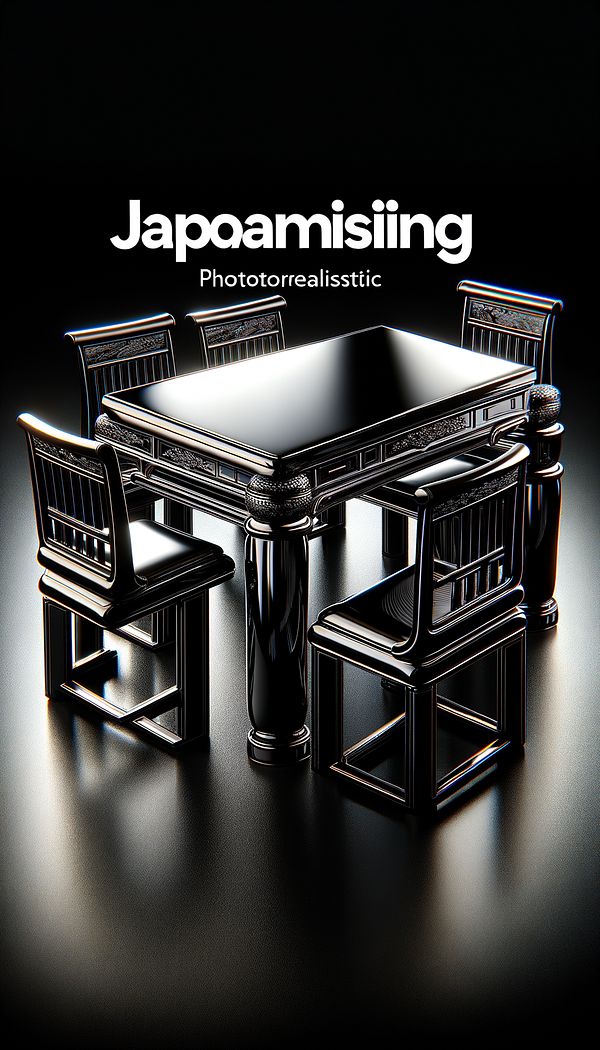What is Japanning?
Japanning is a type of finish that gives furniture or objects a sleek, glossy, and durable surface, mimicking East Asian lacquer work.
Description
Japanning is a decorative technique that originated in Europe in the 17th century as a Western imitation of East Asian lacquer work - specifically, the lacquer techniques used in Japan and China. It involves applying several coats of varnish to create a smooth, high-gloss finish that not only beautifies the item but also protects it from wear and tear. The varnishes used in Japanning are typically black or red, although gold and other colors can also be used for intricate designs and decoration.
The detailed and labor-intensive process of Japanning involves preparing the surface by sanding it down, applying undercoats, and then adding several layers of varnish. After each coat, the item is heated in a special oven or stove, which helps to harden the varnish and create a tough, shiny surface. Once the final layer is applied and cured, decorative aspects can be added through methods such as hand painting or the application of gold leaf.
Japanning is admired for its lustrous quality and its ability to imitate the depth and richness of traditional Asian lacquer work. Its durability also makes it an attractive option for protecting and enhancing furniture and objects. Despite its name, Japanning is very much a European creation, developed as a less expensive alternative to importing actual lacquered items from East Asia.
Usage
Japanning has been used to decorate and protect a variety of objects, including furniture (such as cabinets, tables, and chairs), small decorative items, and even musical instruments. Its high durability and attractive glossy finish make it ideal for items that are both functional and decorative. The technique sees usage in both historical reproductions and contemporary design, illustrating its timeless appeal.
FAQs
-
Is Japanning only available in black and red?
No, while black and red are the most traditional colors used in Japanning, other colors including gold can also be used to achieve a variety of aesthetic effects.
-
Can Japanning be applied to any type of furniture or object?
Almost any type of furniture or object can be japanned, provided it has a properly prepared surface that can adhere to the layers of varnish. However, items with complex surfaces may prove more challenging.
-
How should items with a Japanning finish be maintained?
Items with a Japanning finish should be dusted regularly with a soft cloth and kept away from direct sunlight and extreme temperatures. Avoid using harsh chemicals or abrasive cleaning tools, as these can damage the glossy surface.
Practical Application
When considering using Japanning for your project, ensure the surface of the item is smooth and free from imperfections before beginning. This preparation is crucial for a successful, durable finish. Also, consider the visual impact of the high-gloss, richly colored finish in your overall design styles and how it can enhance the aesthetic of a room or object. Patience and meticulous attention during application will yield the best results, echoing the depth and elegance of traditional Asian lacquer work.
-
Furniture Types599 articles
-
Decorative Techniques322 articles
-
Color & Patterns154 articles
-
Textiles & Upholstery252 articles
-
Wall Treatments & Finishes157 articles
-
SouthwesternSouthwestern refers to a design style influenced by the characteristics and cultures of the American Southwest.
-
ChinoiserieChinoiserie is a style inspired by Chinese artistic influences.
-
Art DecoArt Deco is a design style characterized by bold geometric shapes, rich colors, and lavish ornamentation.
-
SpatteringSpattering is a decorative painting technique that creates a speckled or textured effect.
-
Wall SculptureA wall sculpture is a three-dimensional artwork designed to be mounted on a wall.
